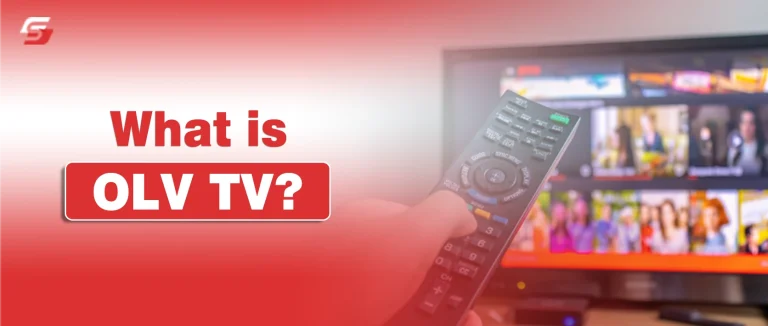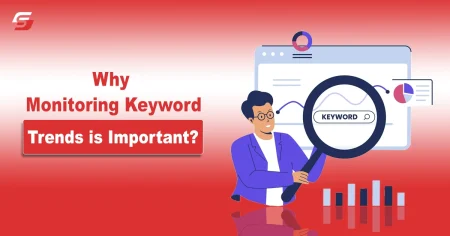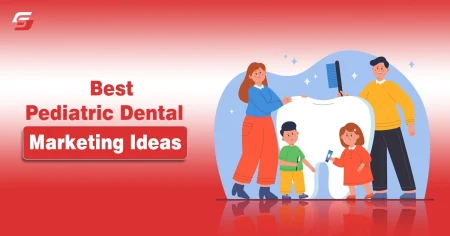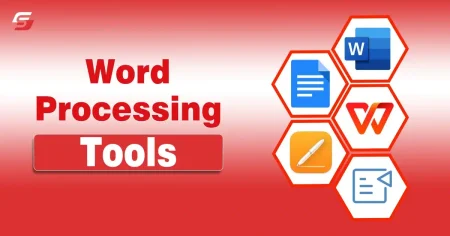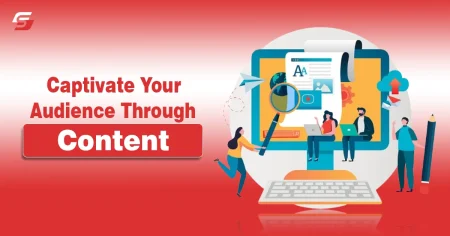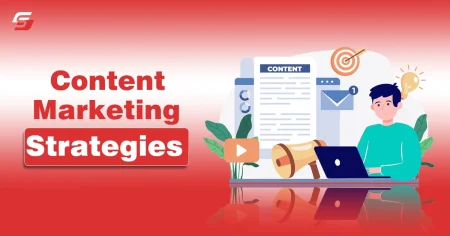Have you ever noticed how the olv ads you watch online feel smarter, faster, and more personal than the ones on TV? That’s not a coincidence, it’s the rise of OLV TV, or Online Video Advertising. While traditional television still reaches millions, OLV TV is quietly reshaping how brands connect with viewers.
It blends the storytelling power of TV with the precision of digital targeting, making every view count. But what exactly is OLV TV, how does it work, and why are so many advertisers shifting their budgets toward it? Let’s break down how this new form of video advertising is transforming the way audiences watch, and how businesses of every size are benefiting from it.
How OLV TV Is Transforming Traditional TV Advertising
OLV TV (Online Video Television) is transforming traditional TV advertising by shifting media consumption from scheduled programming to on-demand video experiences. The change is driven by digital streaming platforms, audience analytics, and cross-device accessibility.
OLV in advertising refers to Online Video Advertising, a digital format that delivers video ads across platforms such as YouTube, social media, and connected TV. OLV allows advertisers to target audiences using demographic, behavioral, and contextual data, making campaigns more personalized and measurable than traditional TV ads.
Unlike static display advertising, OLV engages users through motion, sound, and storytelling, improving brand recall and viewer response rates. This advertising model supports multiple formats, including in-stream, out-stream, and bumper ads, allowing brands to align creative content with specific olv in marketing goals and user intent.
Traditional television focused on mass reach, while OLV TV delivers personalized messages supported by measurable data. This transformation gives advertisers greater control over targeting, performance tracking, and creative delivery, bridging the gap between awareness and measurable engagement.
What Is OLV Media?
OLV media refers to Online Video advertising that delivers short-form and long-form video content across digital platforms such as YouTube, streaming sites, social media feeds, mobile apps, and publisher networks. OLV media uses programmatic delivery, audience segmentation, and real-time bidding to reach viewers based on intent, demographics, and behavior instead of traditional broadcast scheduling.
Brands use OLV media to improve ad visibility, cross-device reach, view-through conversions, and cost efficiency, especially when targeting users who consume content on smartphones or streaming platforms. The OLV environment gives advertisers more control over targeting, more measurement accuracy, and higher engagement rates, making it a core format in modern performance marketing and brand-awareness campaigns.
Shift from Linear TV to Digital, Data-Driven Video
Linear TV broadcasting operates on fixed schedules, whereas OLV TV delivers content dynamically across streaming platforms like YouTube, Hulu, and Connected TV. This shift replaces uniform programming with audience-based distribution.
Comparison | Linear TV vs OLV TV
| Attribute | Linear TV | OLV TV (Online Video Television) |
| Delivery Method | Fixed broadcast schedule | On-demand digital streaming |
| Ad Placement | Time-based, channel-specific | Data-driven, real-time bidding |
| Audience Targeting | Broad demographic groups | Precise behavioral and demographic segmentation |
| Measurement | Limited post-campaign data | Real-time analytics and optimization |
| Creative Flexibility | Standard 30–60 sec spots | Variable lengths (6–30 sec) across devices |
| Viewer Control | Passive consumption | Interactive and skippable formats |
This digital marketing model allows advertisers to optimize each impression and adapt messaging to user intent, creating more efficient and responsive campaigns.
Cost Efficiency and Precise Audience Targeting
OLV TV advertising achieves cost efficiency through automated media buying and precision targeting. Instead of paying for broad reach, advertisers invest in audiences that demonstrate real intent or engagement potential.
Key advantages of OLV TV in cost and targeting:
- Reduces wasted ad spend by focusing only on relevant viewer segments
- Enables programmatic bidding based on audience value, not airtime cost
- Supports dynamic budget allocation to high-performing ad sets
- Allows creative testing and immediate optimization without rebooking slots
- Provides measurable ROI through conversion tracking and engagement metrics
These features make OLV TV accessible to both large brands and small businesses seeking data-backed growth without high production or broadcast costs.
Impact on Creative Strategy and Ad Buying Processes
OLV TV reshapes creative and media planning by emphasizing short-form, platform-optimized videos. Advertisers adapt visuals and narratives for mobile, desktop, and connected screens.
Ad buying is now driven by automated demand-side platforms (DSPs), which purchase impressions in real time instead of pre-negotiated time slots. This automation gives brands flexibility to test different creatives, analyze viewer responses instantly, and refine messaging continuously.
The creative process now merges storytelling with analytics, data insights guide tone, visuals, and timing. As a result, OLV TV campaigns achieve both emotional resonance and measurable olv in marketing efficiency.
Programmatic Targeting and Delivery in OLV Campaigns
Programmatic targeting in OLV campaigns automates the process of buying and delivering online video ads through real-time data and machine learning. Unlike traditional media buying, which relies on fixed schedules and manual negotiations, programmatic systems use algorithms to analyze audience behavior and place ads instantly on the most relevant platforms.
This automation enables advertisers to reach the right viewers at the right moment, improving campaign efficiency and return on investment (ROI). OLV TV benefits from this precision by distributing ads across multiple devices and streaming environments, ensuring consistent message delivery and measurable engagement.
What Programmatic Advertising Means for OLV TV
Programmatic advertising in OLV TV refers to the automated method of purchasing and managing video ad inventory using data and software platforms. This system replaces traditional ad buying, which depends on human negotiations, with technology that evaluates audience intent and content relevance in real time.
Programmatic technology allows OLV advertisers to use demographic, behavioral, and contextual signals to match ads with target audiences more effectively. The main purpose is to increase ad relevance, reduce wasted impressions, and ensure that every ad view contributes to measurable campaign goals.
Through platforms like Google Display & Video 360, The Trade Desk, and Amazon DSP, OLV TV advertisers can deliver personalized video messages to segmented audiences across connected TVs, mobile apps, and streaming services.
Role of DSPs, Algorithms, and Real-Time Bidding Models
A Demand-Side Platform (DSP) is the core technology that enables advertisers to purchase video ad inventory automatically. DSPs connect advertisers to multiple ad exchanges, allowing them to bid on available impressions within milliseconds. This system ensures that OLV TV ads are shown only to users who match predefined audience parameters.
Algorithms within DSPs analyze thousands of data points, such as location, device type, viewing time, and engagement probability, to determine which ad should appear and at what price. Real-Time Bidding (RTB) operates as an auction where multiple advertisers compete for the same ad impression.
The winning bid secures the placement instantly, and the ad is served to the viewer without delay. Together, DSPs, algorithms, and RTB create a fully automated pipeline that maximizes reach, maintains cost control, and ensures that ads appear in the most contextually relevant environments.
Key Components of OLV Programmatic Delivery
| Component | Function | Benefit to Advertisers |
| DSP (Demand-Side Platform) | Automates ad purchasing and manages campaigns | Increases buying efficiency and reach |
| Algorithms | Analyze user data and predict engagement probability | Improves targeting precision |
| Real-Time Bidding (RTB) | Conducts instant ad auctions | Ensures optimal pricing and ad relevance |
Optimization Strategies (CPV, CPM, CPC) for Maximum Reach and ROI
OLV TV campaigns use specific pricing and optimization models, CPV (Cost Per View), CPM (Cost Per Mille), and CPC (Cost Per Click), to measure performance and control costs.
- CPV focuses on viewer engagement by charging only when a viewer watches a video for a set duration, making it ideal for awareness and storytelling campaigns.
- CPM measures cost per 1,000 impressions and suits campaigns focused on broad reach and brand visibility.
- CPC charges only when a viewer interacts with the ad, aligning with direct-response goals such as website visits or app installs.
To maximize ROI, advertisers often blend these models based on campaign objectives and audience intent. Automated systems analyze engagement data and reallocate budgets toward higher-performing models, ensuring that OLV campaigns maintain balance between cost efficiency and visibility.
Through continuous testing, frequency capping, and audience refinement, OLV advertisers can increase completion rates, optimize conversion outcomes, and sustain measurable brand growth.
Audience Behaviour and Engagement in OLV TV vs Traditional TV
Audience behaviour in OLV TV differs sharply from traditional television because digital viewers control what, when, and how they watch. Traditional TV audiences passively consume scheduled broadcasts, while OLV audiences engage through on-demand streaming, interactive formats, and personalized recommendations.
This behavioural shift changes how advertisers design video campaigns and measure engagement. OLV TV provides real-time feedback through metrics like view duration, skip rate, and interaction rate, allowing brands to understand active attention rather than passive exposure. These behavioral insights enable precise content adaptation, ensuring every video impression aligns with the viewer’s intent and platform environment.
Attention Span and Interaction Differences
Attention span in OLV TV is shorter but more focused compared to traditional TV. Viewers on digital platforms like YouTube, Hulu, or social video apps engage in selective viewing, often consuming short-form videos that last under 30 seconds. Traditional TV audiences, however, watch longer programs with limited interaction opportunities.
OLV platforms encourage active engagement, allowing users to pause, skip, or click ads, actions that provide measurable indicators of attention quality. Traditional TV offers passive viewing, where exposure is guaranteed but engagement is uncertain.
The interactive design of OLV TV formats, such as clickable overlays or shoppable ads, turns passive impressions into measurable actions. Advertisers can analyze metrics like view completion rate, click-through rate, and dwell time to determine how effectively the content retains attention.
Comparison: Audience Attention and Interaction
| Attribute | OLV TV Audience | Traditional TV Audience |
| Viewing Control | User-initiated, on-demand | Network-scheduled programming |
| Engagement Type | Interactive and measurable | Passive and limited |
| Average Attention Span | 6–30 seconds | 15–60 minutes |
| Feedback Mechanism | Real-time analytics and click data | Post-campaign ratings |
This data-rich environment helps advertisers understand not only whether people watched but how they responded, improving creative and media decisions.
How Intent-Driven Viewing Affects Ad Performance
Intent-driven viewing defines how audience motivation impacts ad effectiveness. In OLV TV, viewers choose content that aligns with specific interests, such as tutorials, reviews, or entertainment, indicating high contextual intent. Ads shown in these moments benefit from stronger relevance and higher engagement rates.
Traditional TV advertising, by contrast, interrupts content rather than complements it, leading to lower recall and reduced response rates. When ad placement matches viewer intent, OLV campaigns achieve improved click-through rates, higher view completion, and better brand lift.
We take an OLV example like a fitness brand promoting workout gear performs better when its video ad appears before fitness tutorials than during unrelated programming. This alignment between viewer intent and ad context enhances message retention and purchase likelihood. OLV TV platforms therefore leverage intent-based targeting to ensure ads appear during relevant viewing sessions, maximizing both efficiency and consumer response.
The Role of Personalization and Contextual Relevance
Personalization in OLV TV uses viewer data such as demographics, watch history, and device type to ad experiences. Personalized video ads adjust visuals, offers, or messaging based on user profiles, making them more relatable and effective. Traditional TV lacks this capability, delivering uniform messages to all viewers regardless of interest.
Contextual relevance further strengthens ad performance by matching the ad content with the surrounding video environment. When an ad’s theme, tone, or subject matter aligns with the video being watched, viewer receptiveness and engagement rise significantly.
Advertisers in OLV TV use data signals from platforms like YouTube or Connected TV to dynamically adapt creative assets. For instance:
- Travel brands serve destination videos during travel content.
- Food brands run recipe ads before cooking shows.
- Tech companies promote devices within gadget review segments.
This integration of personalization and contextual targeting builds stronger viewer connection, enhances trust, and improves measurable outcomes such as engagement rate and conversion value.
OLV TV for Small Businesses and Budget Strategy
OLV TV offers small businesses a scalable, performance-focused advertising model that aligns with limited marketing budgets and local audience goals. Unlike traditional TV, which demands high production and airtime costs, OLV TV enables businesses to run short, data-driven video ads across digital platforms such as YouTube, Facebook, and OTT streaming channels. This cost-effective model helps local brands achieve measurable visibility, audience engagement, and conversion without requiring large upfront investment.
Here is the table for OLV vs OTT | Key Differences in Digital Advertising
| Definition | Video ads shown on digital platforms such as YouTube, Facebook, and web publishers. | Ads delivered through internet-based TV apps and streaming services like Netflix, Hulu, and Roku. |
| Device Reach | Targets users on mobile, desktop, and social media platforms. | Reaches audiences on Smart TVs, streaming boxes, and connected devices. |
| Ad Format | Short, skippable, or non-skippable video ads within digital content. | Full-screen, TV-like ads shown before or during streaming content. |
| Audience Targeting | Highly data-driven with precise demographic and behavioral targeting. | Broad reach with household-level or device-level targeting. |
| Cost Model | Lower cost, flexible for small to mid-sized businesses. | Higher production and placement cost, ideal for brand-scale campaigns. |
| Measurement Metrics | Clicks, impressions, view-through rate, and conversions. | Viewability, completion rate, and brand lift. |
| Best Use Case | Performance marketing, retargeting, and local brand awareness. | Large-scale branding and storytelling through immersive video ads. |
To explore more ways audiences access digital video platforms beyond OLV and OTT advertising, check out this detailed guide on free sports streaming sites.
Leveraging OLV TV for Local or Small-Scale Campaigns
OLV TV allows small businesses to reach specific geographic and demographic segments efficiently. A local business can use location-based targeting, age filters, and audience interests to show video ads only to nearby consumers most likely to convert.
This precision reduces wasted ad spend and increases the relevance of each impression. Platforms like Google Ads and Meta Ads Manager provide affordable access to OLV inventory, making small-scale campaigns competitive with larger brands in terms of reach and performance. Small businesses using OLV TV can strengthen campaigns by aligning them with effective content marketing strategies that enhance audience engagement.
Key advantages include:
- Geo-targeting: Deliver ads within a specific city or radius.
- Audience filters: Target by interests, age, or viewing behavior.
- Flexible scheduling: Run short bursts of video ads during peak hours.
These features ensure that small-scale campaigns remain cost-efficient and result-oriented.
Budget Allocation Tips for SMEs
A small or medium-sized enterprise (SME) should divide its OLV TV budget strategically between creative production, media buying, and optimization. Generally, 60% of the budget should go toward ad placement and audience targeting, 25% toward video creation, and 15% toward continuous performance analysis. Cost models like CPV (Cost per View) and CPM (Cost per Mille) offer flexibility, allowing advertisers to control spend based on real engagement metrics.
Budget allocation framework for SMEs using OLV TV:
| Allocation Area | Recommended Share | Objective |
| Media Buying & Targeting | 60% | Reach and exposure |
| Video Production | 25% | Brand storytelling and engagement |
| Optimization & Reporting | 15% | Performance improvement |
By focusing spend on measurable and adaptable placements, SMEs can sustain long-term ROI from even modest advertising budgets.
Examples of Affordable Performance-Driven Video Campaigns
Several small brands have leveraged OLV TV to achieve significant visibility at minimal cost. For example, a local restaurant chain might run six-second bumper ads on YouTube targeting nearby users searching for “food delivery near me.”
A real estate agency could promote property tours via skippable in-stream ads to users browsing home-related content. Similarly, a fitness studio can use vertical OLV ads on social platforms to attract young professionals within a specific district.
These campaigns demonstrate that affordable OLV advertising can drive strong local awareness and conversions when paired with smart audience segmentation, concise messaging, and consistent retargeting.
The Future Screen | Where OLV Redefines Advertising
OLV TV isn’t just another digital trend, it’s the bridge between old broadcasting and the new age of smart, data-driven video advertising. It allows brands to reach audiences where they spend most of their time, online, while still capturing the emotional depth of traditional TV.
From small businesses running local campaigns to global brands optimizing performance through programmatic targeting, OLV TV offers flexibility, precision, and measurable results. As viewing habits continue shifting toward digital platforms, the advertisers who understand and leverage OLV TV will shape the future of how stories are told and how consumers connect with brands.
Frequently Asked Questions About OLV TV
OLV TV stands for Online Video Advertising on Television platforms, combining digital precision with TV-style reach.
OLV TV uses data-driven targeting and real-time delivery, while traditional TV relies on broad audience broadcasting.
OLV TV offers measurable engagement, cost efficiency, and precise audience segmentation.
Yes, OLV TV allows small businesses to run affordable, performance-based local video campaigns.
Platforms like YouTube, Hulu, and connected TV services deliver OLV campaigns across devices.




